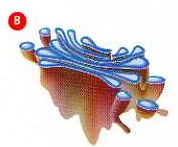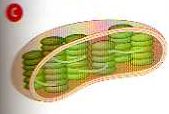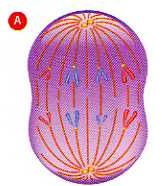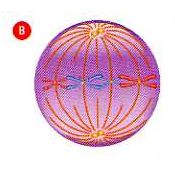Science 9, Unit 2
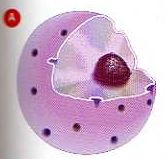
A unit review quiz covering reproduction.
- 1.
Describe two issues that come up from assisted reproductive technologies.
- 2.
It is the year 2552, and you are a biological engineer given the task of creating an organism that can colonize a newly discovered planet. The planet has a small amount of water, strong winds, and a temperature range of -20C to 50C. What method of reproduction would your organism use? Why?
- 3.
What is the difference between plant and animal cells?
- A.
Only animal cells have cell walls and chloroplasts.
- B.
They are the same.
- C.
Only plant cells have cell walls and chloroplasts.
- D.
Only plant cells have ribosomes not connected to the endoplasmic reticulum.
Correct Answer
C. Only plant cells have cell walls and chloroplasts.Explanation
Pg. 122-123Rate this question:
-
- 4.
Proteins are built in the ___________________.
Correct Answer
ribosome
ribosomesExplanation
Pg. 123Rate this question:
- 5.
DNA stands for:
- A.
Diphosphonucleic acid
- B.
Dioxyribonucleic acid
- C.
Dioxyribonucleic atom
- D.
Dichromatonitrogen acid
Correct Answer
B. Dioxyribonucleic acidExplanation
Pg. 126Rate this question:
-
- 6.
The sides of the DNA "ladder" are made up of:
- A.
Sugar and phosphate
- B.
Phosphate and thymine
- C.
Cytosine and guanine
- D.
Sugar and nucleic acid
Correct Answer
A. Sugar and phosphateExplanation
Pg. 126Rate this question:
-
- 7.
The "rungs" of the DNA ladder are made up of:
- A.
Chromatin and genes
- B.
Sugar and phosphate
- C.
A pair of phosphate bases
- D.
A pair of nitrogenous bases
Correct Answer
D. A pair of nitrogenous basesExplanation
Pg. 126Rate this question:
-
- 8.
The difference between chromatic and chromosomes is:
- A.
Chromatin contains DNA and proteins. Chromosomes are the x-shaped structures that strands of chromatin form into for cell division.
- B.
Chromatin is the x-shaped structures used in cell division. Chromosomes are the specific strands of chromatin used in protein production.
- C.
Chromatin is the DNA found in animal cells and chromosomes are the DNA found in plant cells.
- D.
Chromatin provides the cell with the information used in protein production, and chromosomes provide the cell with the information used in cell replication.
Correct Answer
A. Chromatin contains DNA and proteins. Chromosomes are the x-shaped structures that strands of chromatin form into for cell division.Explanation
Pg. 128Rate this question:
-
- 9.
Genes are:
- A.
The sections of your DNA that provide information used to control cell division.
- B.
The collection of chromosomes you receive from each of your parents.
- C.
Are the section of DNA used to make new ribosomes.
- D.
Small sections of DNA located at specific places on a chromosome that provide the information to produce the different proteins used by your cells.
Correct Answer
D. Small sections of DNA located at specific places on a chromosome that provide the information to produce the different proteins used by your cells.Explanation
Pg. 129Rate this question:
-
- 10.
If each of your cells has the same amount of genetic information, how can cells become specialized?
- A.
Only specific chromosomes are unwound into chromatin.
- B.
Only specific genes are read in each cell.
- C.
The chromosomes that aren't needed are made non-functional by special proteins.
Correct Answer
B. Only specific genes are read in each cell.Explanation
Pg. 129Rate this question:
-
- 11.
Specialized proteins that speed up the chemical reactions within your cells are called ____________.
Correct Answer
enzymesExplanation
Pg. 130Rate this question:
- 12.
Specialized proteins that act as chemical messengers are called ___________________.
Correct Answer
hormonesExplanation
Pg. 130Rate this question:
- 13.
Put the steps of protein production in order.A. The golgi body repackages the protein for transport out of the cell.B. The nucleus receives a chemical signal to make a specific protein.C. The vesicle attaches to the cell membrane, and releases the proteins out of the cell.D. The manufactured protein enters the endoplasmic reticulum.E. The DNA message for a specific protein is copied into a small molecule called RNA.F. The RNA message is delivered to the ribosome, and the ribosome makes the protein.G. A vesicle forms off the end of the golgi body to carry the protein to the cell membrane.H. RNA leaves through a nuclear pore.I. A vesicle forms off the end of the endoplasmic reticulum and carries the protein to the golgi body.
- A.
B, E, H, F, D, I, A, G, C
- B.
C, B, E, F, G, I, A, D, H
- C.
A, C, E, D, B, I, H, F, G, B
- D.
I, E, B, F, G, H, A, C, D
Correct Answer
A. B, E, H, F, D, I, A, G, C -
- 14.
What is a gene mutation?
- A.
A mutation is a change in which bases pair together.
- B.
A mutation is a change in the order of A,G,C, and T bases in a gene.
- C.
A mutation is a change in the number of chromosomes an individual has.
- D.
A mutation is a change in the way genes are organized on the chromosome.
Correct Answer
B. A mutation is a change in the order of A,G,C, and T bases in a gene.Explanation
Pg. 136Rate this question:
-
- 15.
When a mutation is beneficial to an organism, it is a ___________ mutation.
Correct Answer
positive
posExplanation
Pg. 138Rate this question:
- 16.
When a mutation results in the probability that the organism will not be able to reproduce or survive in their environment, it is a ______________ mutation.
Correct Answer
negative
negExplanation
Pg. 139Rate this question:
- 17.
A mutation which does not increase or decrease the survival rate of an organism is a ________________ mutation.
Correct Answer
neutralExplanation
Pg. 140Rate this question:
- 18.
If the original sequence of a gene is: ATC CAG TTA AGC CCGand after mutation is: AAC CAG TTA AGC CCGWhat kind of mutation is it?Is it likely to be harmful? (This question will have 2 answers checked)
- A.
Deletion
- B.
Addition
- C.
Substitution
- D.
Yes
- E.
No
Correct Answer(s)
C. Substitution
E. NoExplanation
Pg. 135Rate this question:
-
- 19.
If the original sequence of a gene is: ATC CAG TTA AGC CCG and after mutation is: ACC AGT TAA GCC CG What kind of mutation is it? Is it likely to be harmful? (This question will have 2 answers checked)
- A.
Addition
- B.
Deletion
- C.
Substitution
- D.
Yes
- E.
No
Correct Answer(s)
B. Deletion
D. YesExplanation
Pg. 137Rate this question:
-
- 20.
Substances of factors that cause mutations are called:
- A.
Mutagens
- B.
Mutators
- C.
Damaging substances
- D.
Mutationers
Correct Answer
A. MutagensExplanation
Pg. 141Rate this question:
-
- 21.
True or False?In gene therapy, researchers replace a mutated gene with a healthy copy by using an inactive virus to carry the gene to the diseased cells.
- A.
True
- B.
False
Correct Answer
B. FalseExplanation
Pg. 142Rate this question:
-
- 22.
The stages of the cell cycle are:
- A.
Growth, DNA replication, cytokinesis
- B.
Interphase, mitosis, cytokinesis
- C.
Interphase, metaphase, anaphase, cytokinesis
- D.
Mitosis, interphase, cytokinesis
Correct Answer
B. Interphase, mitosis, cytokinesisExplanation
Pg. 153Rate this question:
-
- 23.
During interpase the cell:
- A.
Replicates its DNA, grows
- B.
Grows, replicates its DNA
- C.
Grows, replicates its DNA, and grows some more
- D.
Grows, undergoes mitosis, separates
Correct Answer
C. Grows, replicates its DNA, and grows some moreExplanation
Pg. 153Rate this question:
-
- 24.
DNA can replicate by unwinding and breaking apart because:
- A.
A and T pair, and C and G pair, so the two strands from the original form a template.
- B.
Enzymes control which new bases are added to the two strands, making sure that they end up the same.
- C.
It doesn't matter if the two new helices are different - that's where genetic variation comes from.
Correct Answer
A. A and T pair, and C and G pair, so the two strands from the original form a template.Explanation
Pg. 154Rate this question:
-
- 25.
Chromosomes are comprised of:
- A.
Two copies of a DNA molecule (called sister chromatids) joined by a centromere
- B.
Two different strands of DNA (called sister chromatids) joined by a centromere.
- C.
Two different strands of DNA (called chromatids) joined by a centriole.
- D.
Two copies of a DNA molecule (called sister chromatids) joined by a centriole.
Correct Answer
A. Two copies of a DNA molecule (called sister chromatids) joined by a centromereExplanation
Pg. 156Rate this question:
-
- 26.
The stages of mitosis are:
- A.
Metaphase, eary prophase, metaphase, late prophase, anaphase, telophase
- B.
Anaphase, early prophase, late prophase, telophase, metaphase
- C.
Early prophase, late prophase, metaphase, anaphase, telophase
- D.
Telophase, anaphase, metaphase, early prophase, late prophase
Correct Answer
C. Early prophase, late prophase, metaphase, anaphase, telophaseExplanation
The stages of mitosis follow a specific sequence. The first stage is early prophase, where the chromatin condenses into chromosomes and the nuclear envelope starts to break down. This is followed by late prophase, where the chromosomes become more condensed and the spindle fibers start to form. Next is metaphase, where the chromosomes align in the middle of the cell. Anaphase comes after, where the sister chromatids separate and move towards opposite ends of the cell. Finally, telophase occurs, where the chromosomes reach the opposite poles of the cell and the nuclear envelope reforms.Rate this question:
-
- 27.
In which phase of mitosis happen? -replicated chromosomes coil into X-shaped chromosomes -nucleolus is gone, nuclear membrane breaks down -spindle fibres begin to form from the centrioles
- A.
Metaphase
- B.
Early prophase
- C.
Late prophase
- D.
Anaphase
Correct Answer
B. Early prophaseExplanation
Pg. 156Rate this question:
-
- 28.
What type of cell is this?
Correct Answer
animal
animal cellExplanation
Easiest way to tell is lack of cell wall and round shapeRate this question:
- 29.
What cellular structure is this?
Correct Answer
golgi body
Golgi body
Golgi BodyExplanation
The correct answer is "Golgi body." The Golgi body, also known as the Golgi apparatus or Golgi complex, is a cellular structure found in eukaryotic cells. It is responsible for processing, packaging, and distributing proteins and lipids within the cell. The Golgi body consists of a series of flattened sacs called cisternae, which are involved in modifying and sorting molecules before they are transported to their final destinations within the cell or outside of it.Rate this question:
- 30.
What type of cellular structure is this?
Correct Answer
chloroplast
ChloroplastExplanation
The given correct answer for this question is "chloroplast, Chloroplast". Chloroplast is a type of cellular structure found in plants and algae. It is responsible for photosynthesis, the process by which plants convert sunlight into energy. Chloroplasts contain chlorophyll, a pigment that gives plants their green color and is essential for capturing light energy. The duplication of "chloroplast" and "Chloroplast" in the answer might be a typographical error or intended to emphasize the correct spelling.Rate this question:
- 31.
Which of the following pictures shows anaphase?
Correct Answer
A
aExplanation
The correct answer is A,a. In anaphase, the sister chromatids separate and move towards opposite ends of the cell. In picture A, we can see two sets of chromosomes moving away from each other towards opposite poles of the cell. In picture a, we can also see the separation of sister chromatids as they move towards opposite ends. Both pictures accurately depict the process of anaphase.Rate this question:
- 32.
What stage of mitosis does this image show?
Correct Answer
metaphase
MetaphaseExplanation
The image in question shows the metaphase stage of mitosis. In this stage, the chromosomes align along the equator of the cell, forming a single line called the metaphase plate. This alignment ensures that each daughter cell will receive the correct number of chromosomes during cell division. The duplicated chromosomes are fully condensed and attached to the spindle fibers, preparing for their separation in the subsequent stage of mitosis.Rate this question:
- 33.
Cancer is:
- A.
The name for diseases that result from uncontrolled cell division.
- B.
The name for diseases that result from cells that divide before DNA replication starts.
- C.
The name for diseases that causes the cell cycle to reverse.
- D.
The name for diseases caused by having multiple layers of the same cell type.
Correct Answer
A. The name for diseases that result from uncontrolled cell division.Explanation
Cancer is the name for diseases that result from uncontrolled cell division. This means that the cells in the body divide and multiply without any regulation or control, leading to the formation of tumors or abnormal growths. These cells can invade nearby tissues and spread to other parts of the body, causing various health issues and potentially becoming life-threatening.Rate this question:
-
- 34.
How does cancer spread from one part of the body to another?
- A.
Cancer cells absorb into nearby bones, then get released with new blood cells.
- B.
Cancer cells send chemical messages through the blood stream instructing other cells to divide pre-maturely.
- C.
It doesn't - you were just exposed to a particular mutagen in multiple places.
- D.
Some of the cancer cells break away from the tumour and are carried by the blood stream.
Correct Answer
D. Some of the cancer cells break away from the tumour and are carried by the blood stream.Explanation
Cancer cells can break away from the primary tumor and enter the bloodstream or lymphatic system. Once in the bloodstream, these cells can travel to other parts of the body and form new tumors, a process known as metastasis. This is how cancer spreads from one part of the body to another.Rate this question:
-
- 35.
Which of the following is NOT an advantage of asexual reproduction.
- A.
Large numbers of offspring are reproduced very quickly.
- B.
The offspring are genetic clones.
- C.
Large numbers of organisms mean that species can survive even when environmental conditions change.
- D.
Energy is not required to find a mate.
Correct Answer
B. The offspring are genetic clones.Explanation
Pg. 175Rate this question:
-
- 36.
You wake up one morning with a sore throat, and the doctor tells you that you have an infection caused by the streptococcus bacteria. By what method were the bacteria able to reproduce in your throat so quickly?
- A.
Budding
- B.
Binary fission
- C.
Fragmentation
- D.
Spore creation
Correct Answer
B. Binary fissionExplanation
Pg. 169Rate this question:
-
- 37.
Some micro-cellular organisms like hydras and sponges reproduce by budding because:
- A.
They only have a few different cell types
- B.
They are attached to the rock, so don't have to move a lot
- C.
They do not have an internal uterus
- D.
They are too large to reproduce by binary fission - budding is a modified form of binary fission
Correct Answer
A. They only have a few different cell typesExplanation
Micro-cellular organisms like hydras and sponges reproduce by budding because they only have a few different cell types. This means that their cells are not specialized for reproduction, and budding allows them to create new individuals without the need for specialized reproductive organs or structures. Budding is a form of asexual reproduction where a new individual grows as an outgrowth or bud from the parent organism, and eventually detaches to become an independent organism. Since these organisms have limited cell types, budding is a simple and efficient way for them to reproduce.Rate this question:
-
- 38.
True or false:Some reptiles can loose their tails and grow a new one. This is an example of fragmentation.
- A.
True
- B.
False
Correct Answer
B. FalseExplanation
The statement is false because the ability to lose their tails and grow a new one is not an example of fragmentation. Fragmentation refers to a reproductive process where an organism breaks into multiple parts, and each part regenerates into a complete organism. In the case of reptiles losing their tails, this is called autotomy, which is a defense mechanism to escape from predators. The tail that grows back is not a separate organism but a regrowth of the original tail.Rate this question:
-
- 39.
An example of vegetative reproduction is:
- A.
When a tree produces pine cones that will spread to open ground before growing into a new tree
- B.
When algae blooms are caused by motors cutting up the colony and each piece grows into its own colony
- C.
When special cells in a daffodil bulb divide to form a structure that will eventually develop into a plant identical to the parent
- D.
When a flower pollinates itself to form seeds
Correct Answer
C. When special cells in a daffodil bulb divide to form a structure that will eventually develop into a plant identical to the parentExplanation
Pg. 172Rate this question:
-
- 40.
The main disadvantage of vegetative reproduction is:
- A.
It takes a lot longer for the new plant to grow
- B.
That new plants will grow close to each other and the parent
- C.
The parent plant dies as soon as the daughter plant is large enough to survive
- D.
Fields of flowers bloom all at the same time, shortening the length of the that the plant is "in season"
Correct Answer
B. That new plants will grow close to each other and the parentExplanation
Pg. 172Rate this question:
-
- 41.
Which of the following is NOT a benefit of grafting:
- A.
The scion benefits from being grafted to a more vigorous root system
- B.
Grafted trees produce fruit much sooner than trees grown from seed
- C.
Grafting can control the size of the tree
- D.
Genetic variation is produced because all subsequent daughter cells have a mix of the scion and root stock DNA
Correct Answer
D. Genetic variation is produced because all subsequent daughter cells have a mix of the scion and root stock DNAExplanation
Pg. 174Rate this question:
-
- 42.
How is spore formation different from the other types of asexual reproduction?
- A.
Only one daughter cell is produced instead of the usual two.
- B.
The daughter cell does not immediately form a new individual - it is protected until conditions are suitable.
- C.
The daughter cells are able to be carried by water and wind, so the parent is never crowded by new plants.
- D.
It's not.
Correct Answer
B. The daughter cell does not immediately form a new individual - it is protected until conditions are suitable.Explanation
Pg. 174Rate this question:
-
- 43.
What is the difference between reproductive and therapeutic cloning?
- A.
Reproductive cloning produces an individual, while therapeutic cloning is used to produce stem cells.
- B.
Reproductive cloning uses an nucleus from an adult cell and an empty egg cell, which therapeutic cloning uses two adult cells.
- C.
Reproductive cloning requires electricity to fuse the two cells, and therapeutic cloning does not.
- D.
Reproductive cloning is much more successful than therapeutic cloning.
Correct Answer
A. Reproductive cloning produces an individual, while therapeutic cloning is used to produce stem cells.Explanation
Pg. 177Rate this question:
-
- 44.
Which of the following is NOT a use of human-assisted cloning?
- A.
Mass produce agricultural products with a desired trait (for example, juicy apples)
- B.
Save endangered species
- C.
Replacing damaged cells as a form of medical treatment
- D.
Produce hybrid plants that have only the desirable treats from two similar plants
Correct Answer
D. Produce hybrid plants that have only the desirable treats from two similar plantsExplanation
hybrid is mixture of DNA, therefore not a cloneRate this question:
-
- 45.
What makes the offspring of organisms which sexually reproduce genetically different from each other?
- A.
Each offspring inherits half its genetic material from its mother and the other half from its father, which combine resulting in genetic variation.
- B.
Each offspring inherits twice as much genetic material than it needs (full set from mother + full set from father) and then randomly selects each chromosome.
- C.
Every sex chromosome (X, Y) is genetically different, so no two offspring will inherit the exact same set of chromosomes from the father.
Correct Answer
A. Each offspring inherits half its genetic material from its mother and the other half from its father, which combine resulting in genetic variation.Explanation
Pg. 190Rate this question:
-
- 46.
True or false.Adult cells are diploid and gamete cells are haploid.
- A.
True
- B.
False
Correct Answer
A. TrueExplanation
Adult cells are diploid because they contain two sets of chromosomes, one from each parent. This means that they have two copies of each chromosome. On the other hand, gamete cells are haploid because they only contain one set of chromosomes. This is necessary for sexual reproduction, as when gametes combine during fertilization, they form a diploid zygote with two sets of chromosomes.Rate this question:
-
- 47.
Meiosis I is different from mitosis because:
- A.
In meiosis I the daughter cells get a random assortment of chromosomes that came from the parents. In mitosis, each pair of chromosomes are identical.
- B.
Meiosis I reduces the chromosomal number in half, while mitosis maintains it.
- C.
Meiosis only happens in sexually reproducing organism and mitosis only happens in asexually reproducing organisms.
- D.
In meiosis I, genetic information is exchanged before DNA replication, and in mitosis the exchange in made after replication.
Correct Answer
A. In meiosis I the daughter cells get a random assortment of chromosomes that came from the parents. In mitosis, each pair of chromosomes are identical.Explanation
Pg. 191Rate this question:
-
- 48.
Which of the following processes results in genetic variation during meiosis I?
- A.
Mutations
- B.
Crossing over
- C.
Independent assortment
- D.
A and B
- E.
All of the above
Correct Answer
E. All of the aboveExplanation
Pg. 192/194Rate this question:
-
- 49.
True or False.Meiosis occurs in sexual reproduction because each gamete must have a haploid set of chromosomes.
- A.
True
- B.
False
Correct Answer
A. TrueExplanation
Pg.193Rate this question:
-
- 50.
True or false.Gamete formation is the same in males and females.
- A.
True
- B.
False
Correct Answer
B. FalseExplanation
Pg. 193Rate this question:
-
Quiz Review Timeline +
Our quizzes are rigorously reviewed, monitored and continuously updated by our expert board to maintain accuracy, relevance, and timeliness.
-
Current Version
-
Mar 21, 2023Quiz Edited by
ProProfs Editorial Team -
Nov 04, 2009Quiz Created by
Seferguson
 Back to top
Back to top



